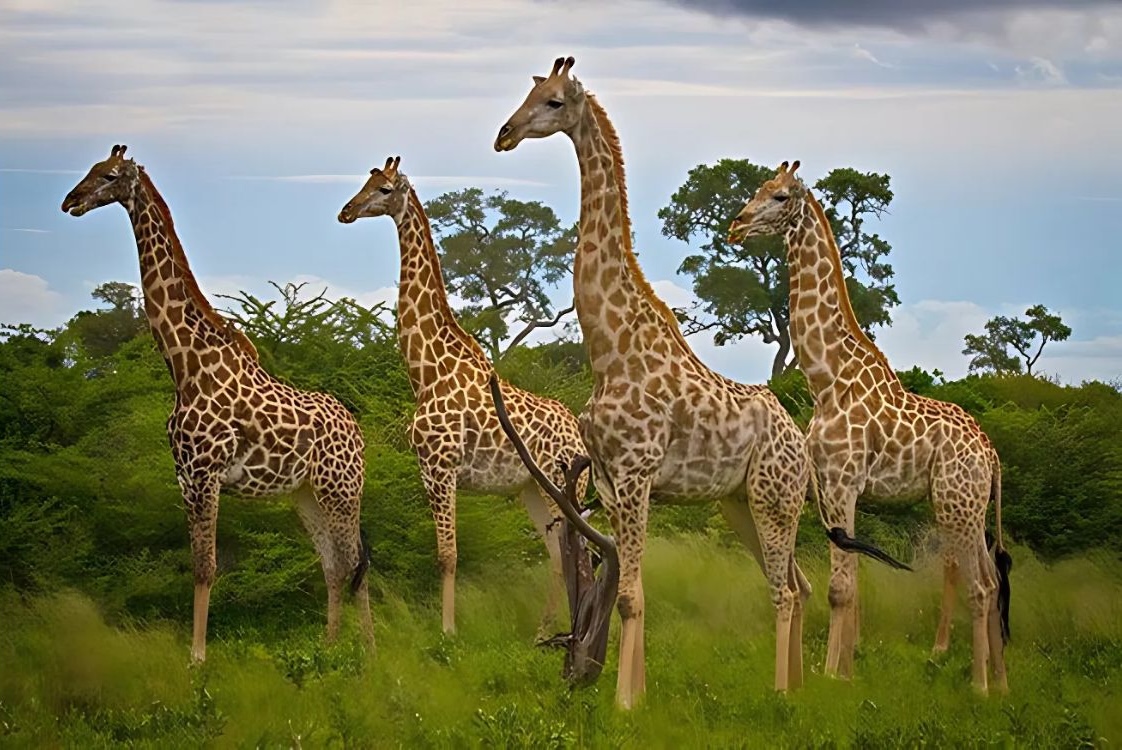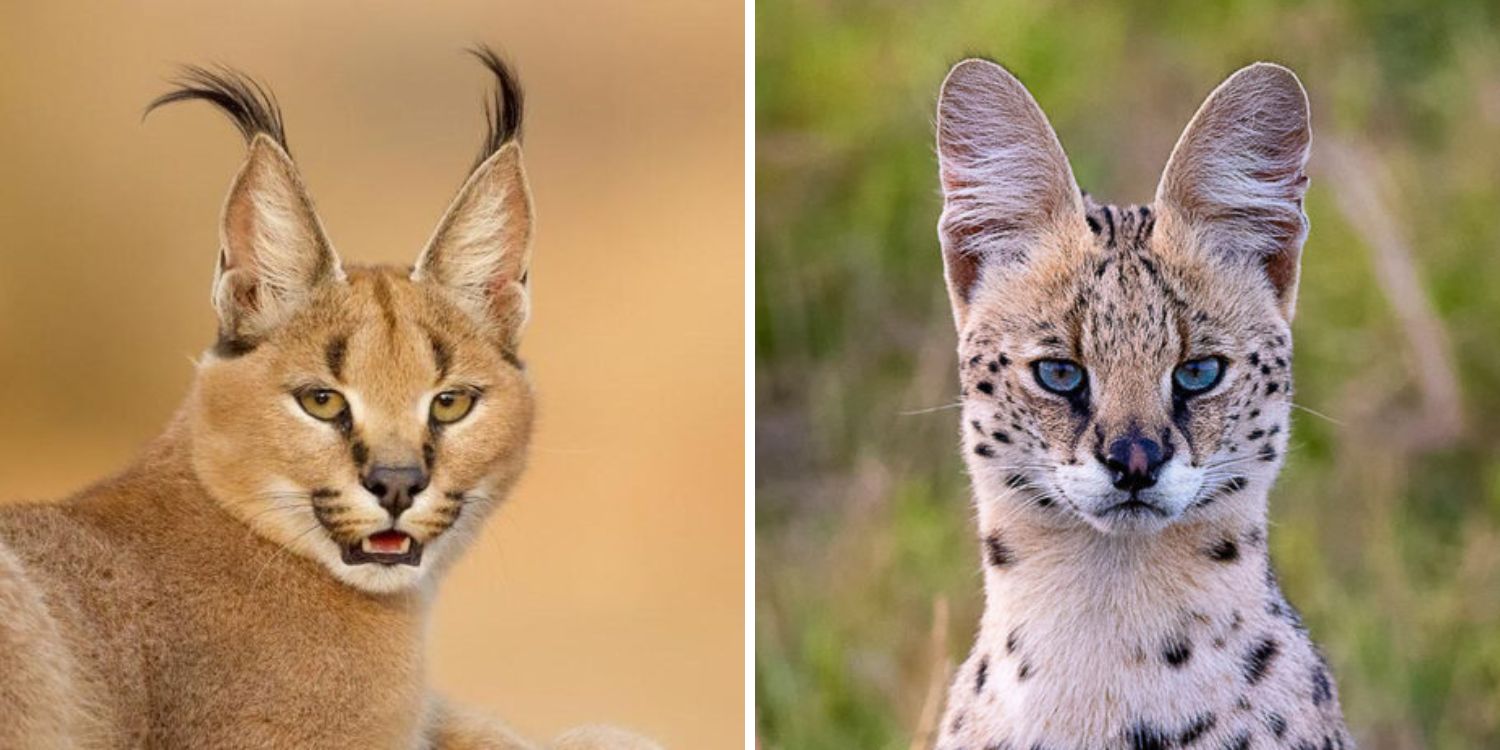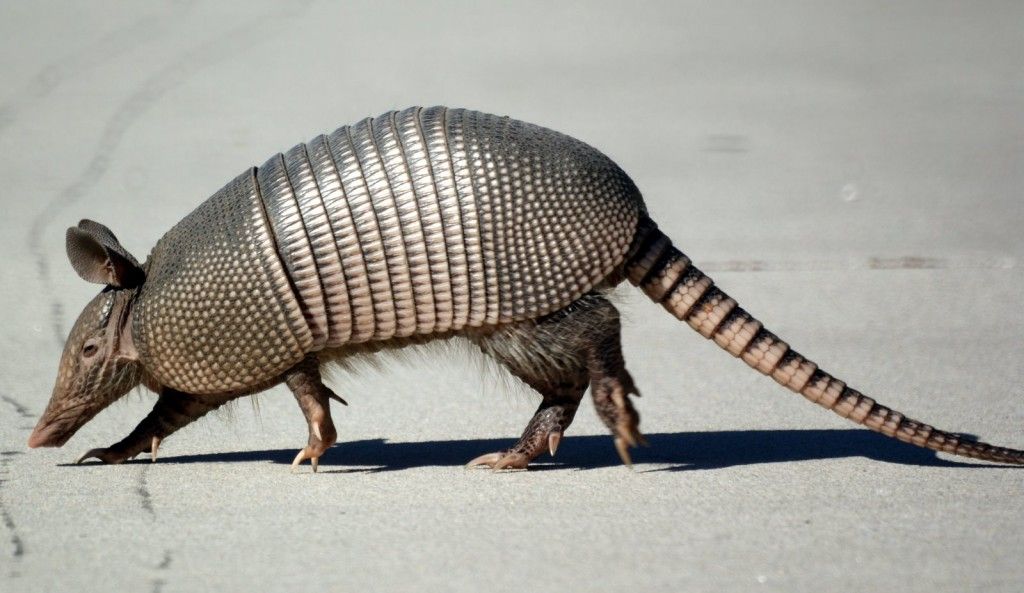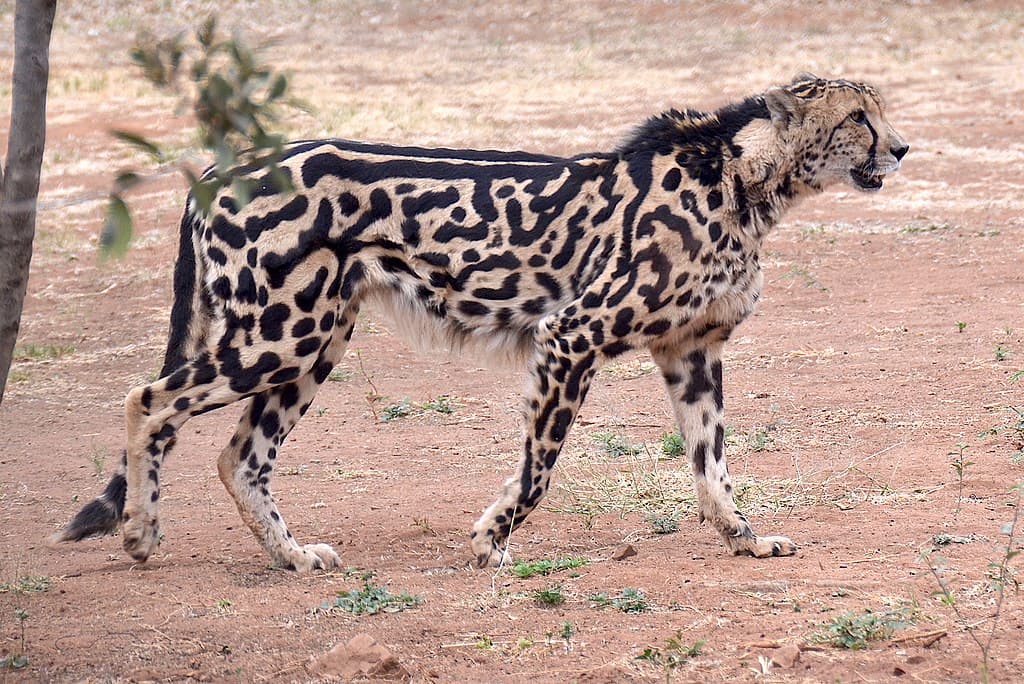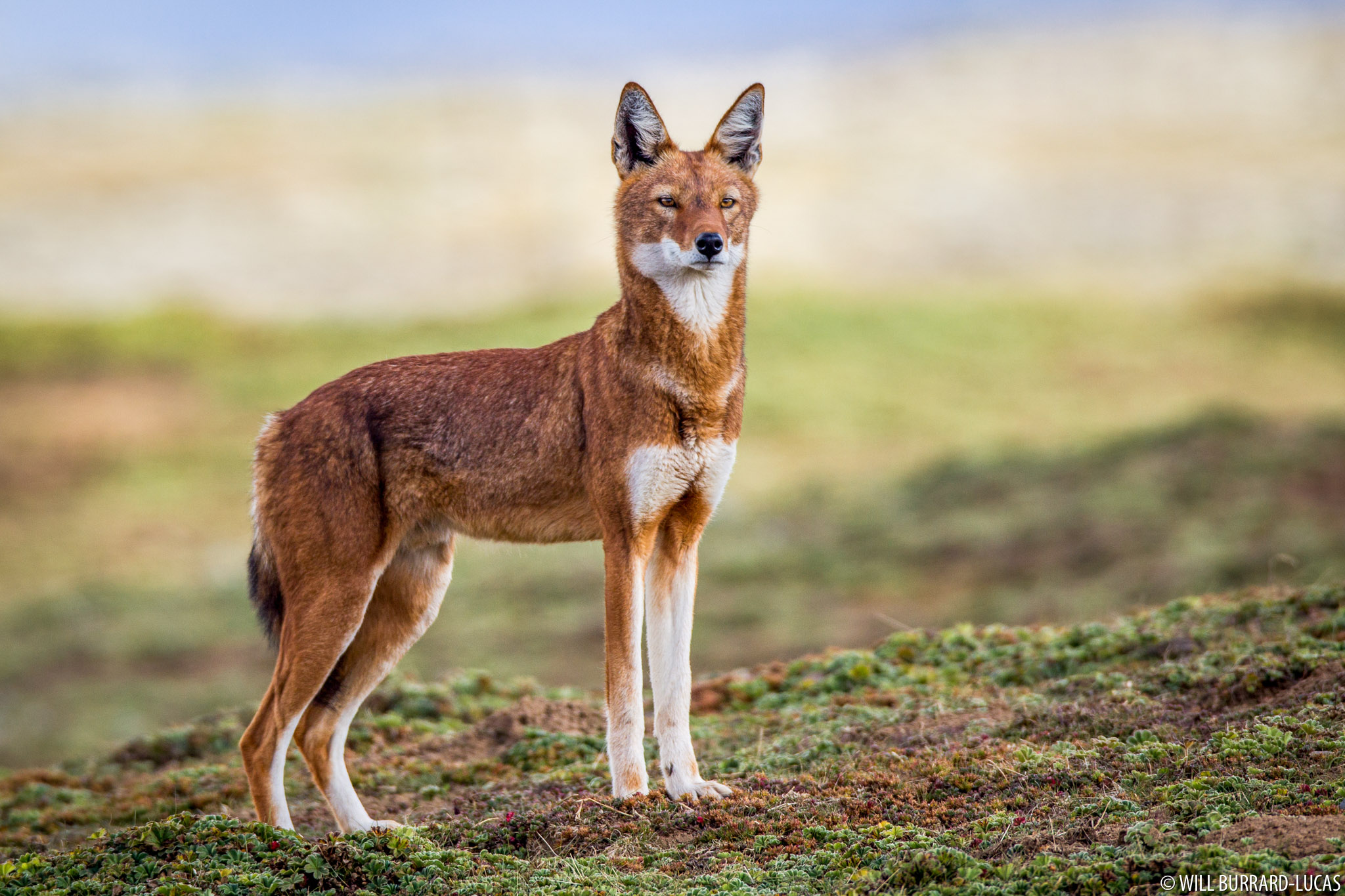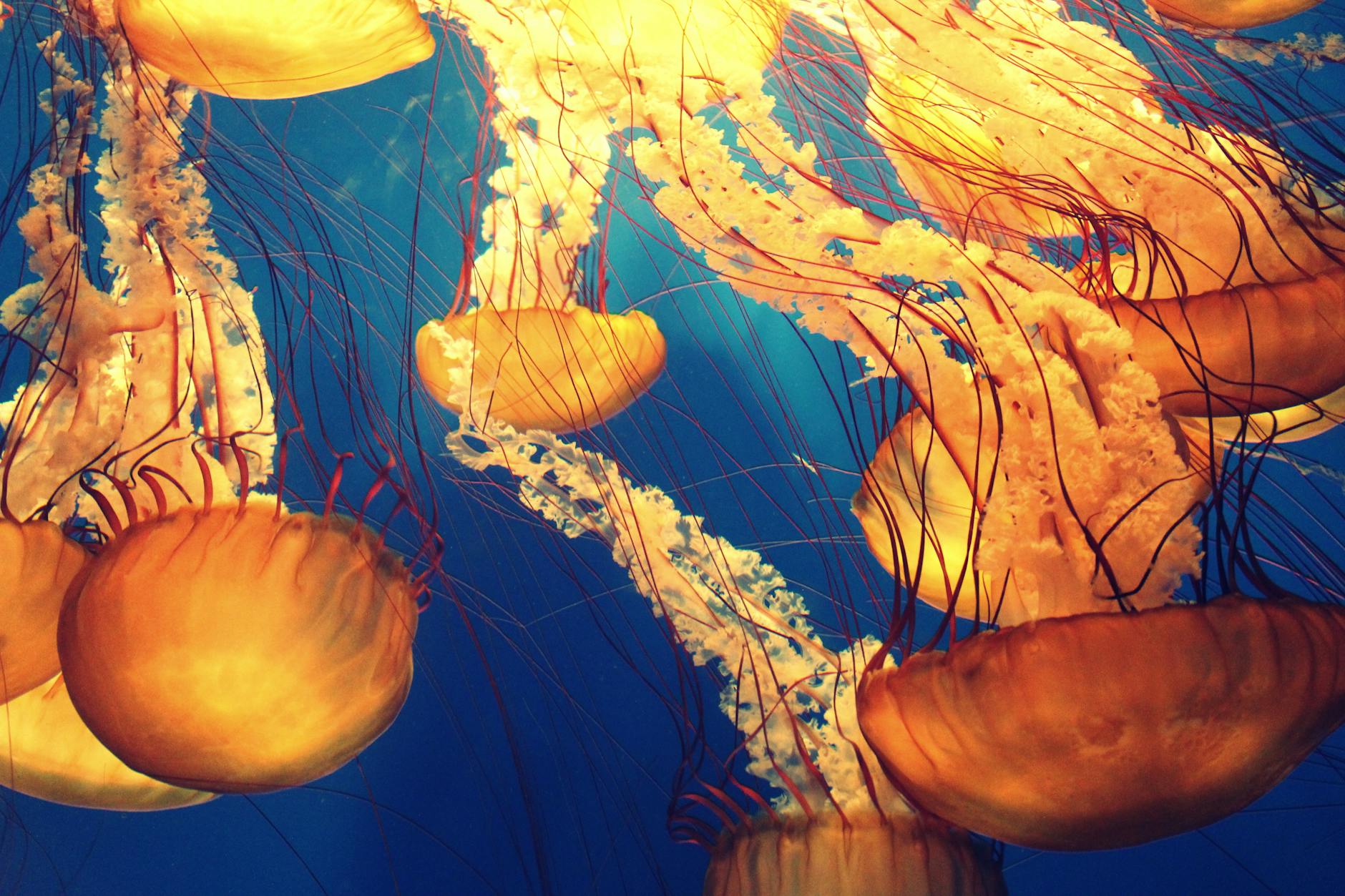The animal kingdom is full of surprises, from the majestic lions and elephants we all know to a plethora of bizarre and wonderful creatures that seem like they could be figments of our imagination. Here are 30 unusual animals that are truly real.
1. Axolotl
- These adorable, permanently larval salamanders are found in the canals of Xochimilco in Mexico City.
- The axolotl’s larval features include feathery gills and a permanently youthful appearance.
- They can regenerate limbs and even parts of their brain and spinal cord!
- They are critically endangered due to habitat loss and water pollution.
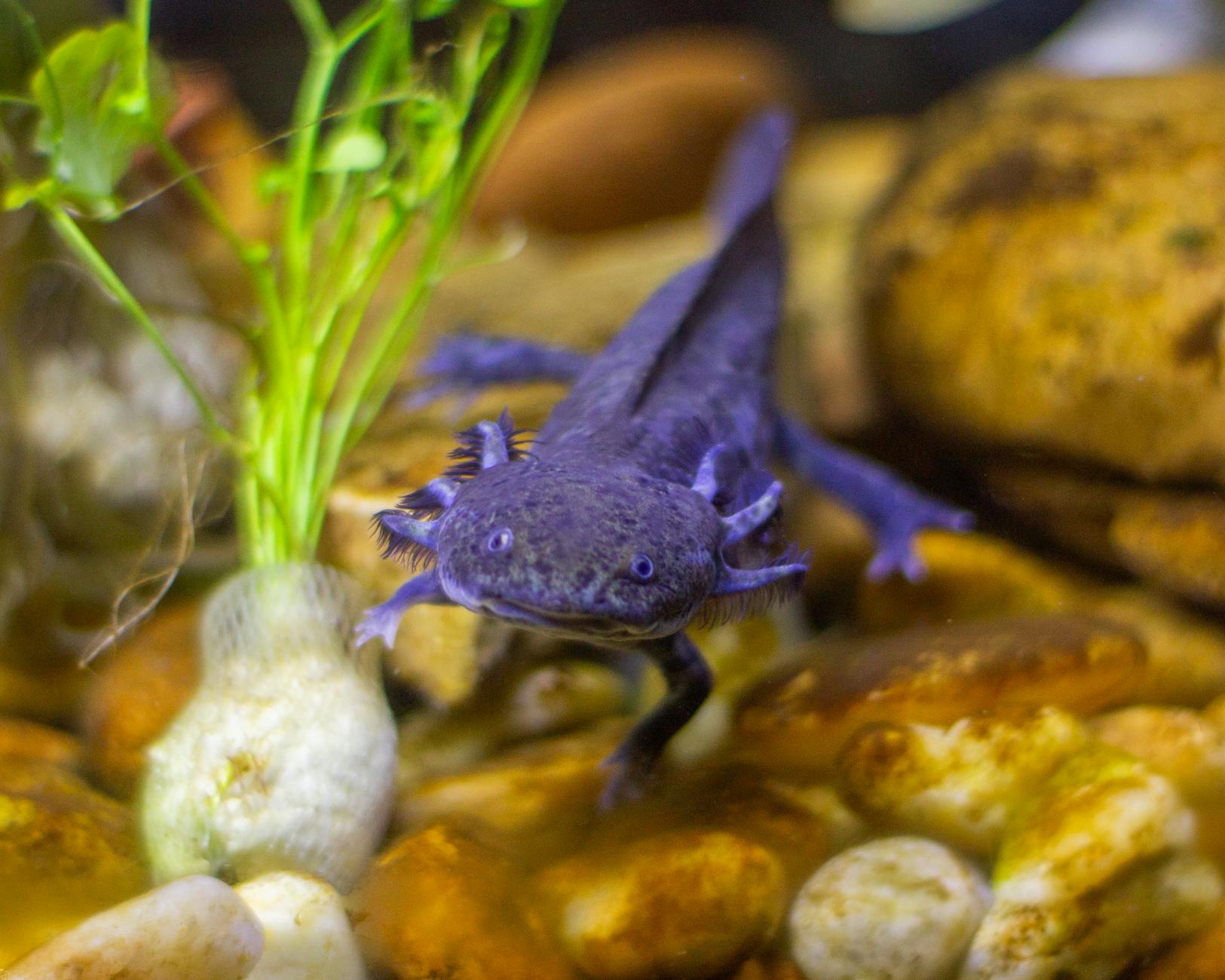
2. Goblin Shark
- This deep-sea dweller lives in the Atlantic and Pacific Oceans at depths of up to 1,300 meters (4,300 ft).
- Nicknamed the “living fossil” due to its resemblance to prehistoric sharks, the goblin shark has a long, flattened snout with protruding jaws lined with sharp teeth.
- These jaws can lunge forward to snag prey, such as fish and squid.
- It lures prey in with a bioluminescent lure on its chin.

3. Pangolin
- Pangolins are covered in tough, overlapping scales and are the only mammals with scales.
- They are also the most trafficked mammal in the world, hunted for their scales, which are used in traditional medicine in some cultures.
- They are shy, solitary creatures that eat ants and termites.
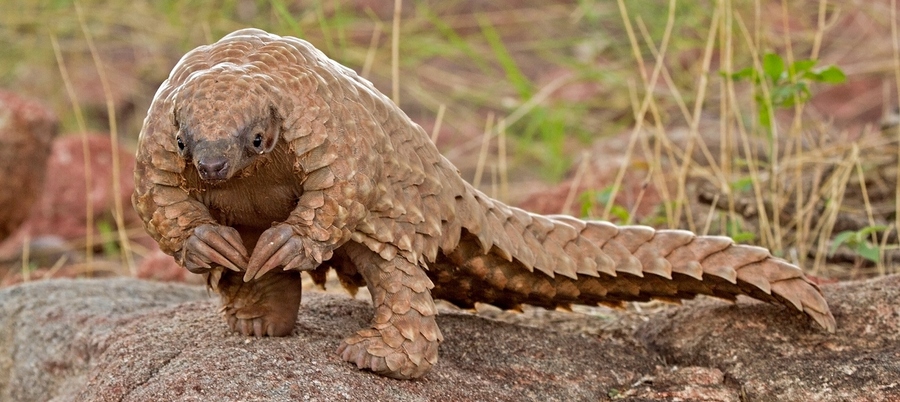
4. Tardigrade
- Also known as water bears, these microscopic invertebrates are nearly indestructible.
- Tardigrades can be found in almost every habitat on Earth, from mountaintops to the ocean floor.
- They can survive in extreme temperatures, radiation, and even the vacuum of space!
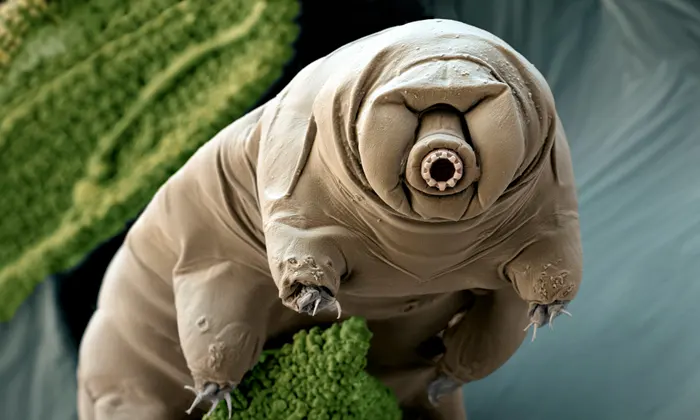
5. Blobfish
- Found at depths of up to 2,800 meters (9,200 ft) in the Indian, Atlantic, and Pacific Oceans, the blobfish is a deep-sea fish with a gelatinous body that can withstand the immense pressure of the deep sea.
- Despite its rather unflattering appearance, the blobfish is well-adapted to its environment.

6. Saiga Antelope
- Saiga antelopes are found in the Central Asian steppes.
- They have unusually large, bulbous noses that are thought to help them regulate temperature and humidity, as well as filter dust from the dry air.
- Sadly, they are critically endangered due to poaching for their horns, which are mistakenly believed to have medicinal properties.
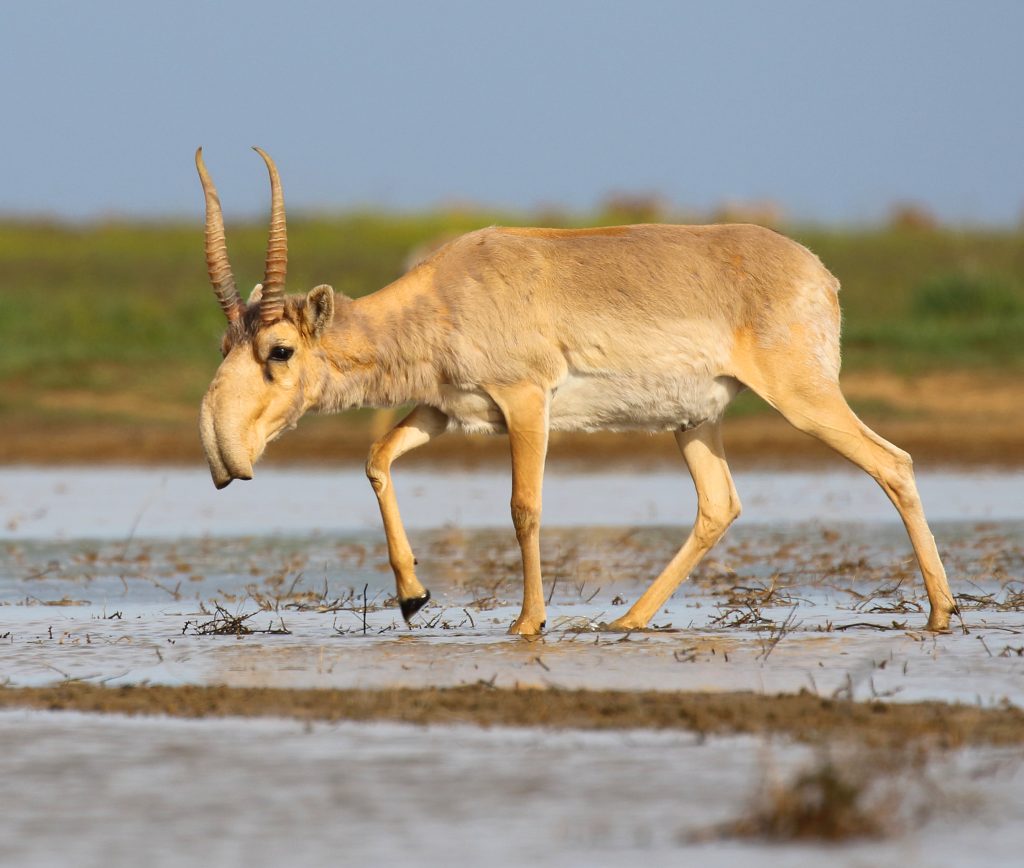
7. Star-Nosed Mole
- Found in eastern North America, the star-nosed mole has a unique pink, fleshy nose with 22 fleshy tentacles.
- These tentacles are highly sensitive and help the star-nosed mole to navigate its underground environment and find food.
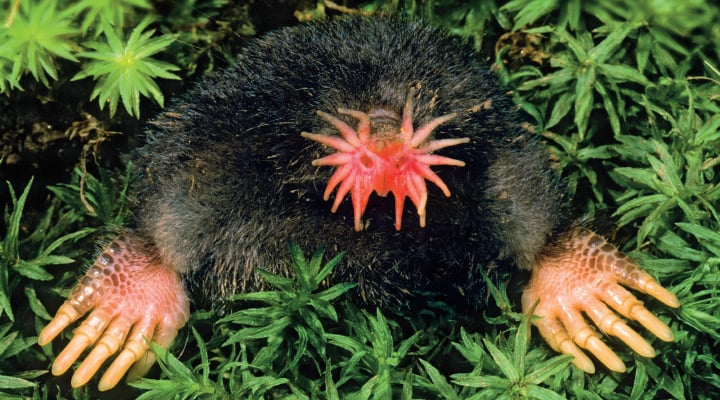
8. Komondor
- This Hungarian herding dog looks like a giant mop come to life.
- This giant Hungarian sheepdog’s long, white coat forms into dreadlocks.
- Komondors were bred to protect sheep from predators and their thick hair not only provides insulation but also protects them from predators.
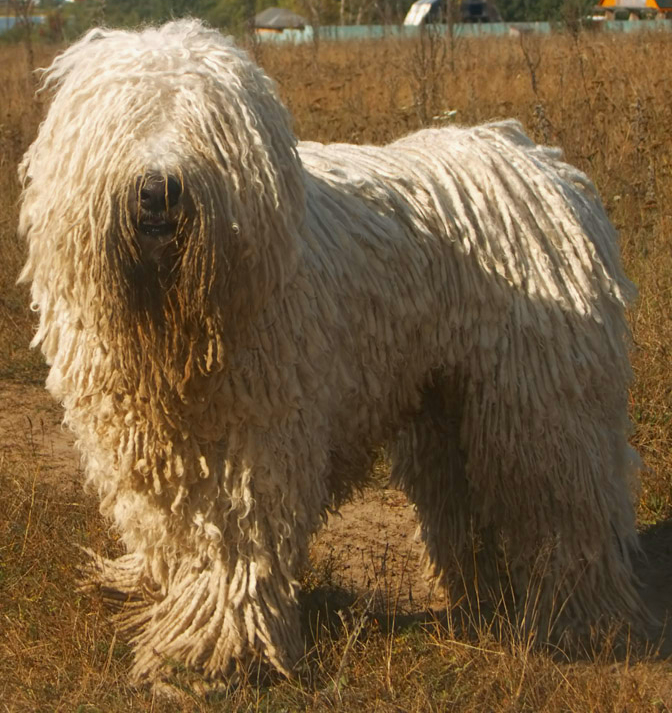
9. Mandarin Duck
- The Mandarin Duck, a stunner among waterfowl, boasts vibrant plumage with a dazzling display of colors.
- Males are particularly eye-catching, sporting a chestnut chest, green head patch, and a prominent crest that resembles a crown.
- Despite their beauty, these ducks are classified as vulnerable due to habitat loss and the illegal pet trade.
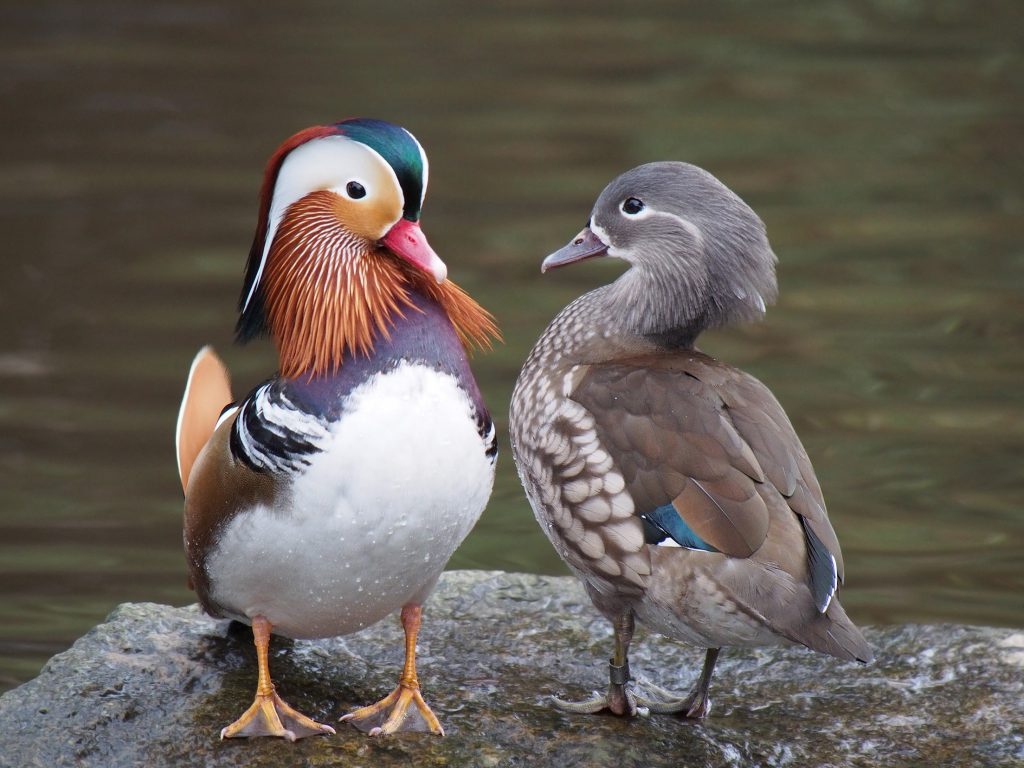
10. Hoatzin
- Found in the swamps and forests of the Amazon Basin, the hoatzin is a strange-looking bird with a long, spiky crest and a pungent odor.
- Hoatzins have claws on two of their toes, which they use to climb trees.
- They are also the only birds known to have a rumen, a fermenting chamber in their digestive system similar to that of a cow, to help it digest leaves.

11. Glass Frog
- The aptly named glass frog lives up to its moniker with translucent skin on its underside, revealing its internal organs!
- These tiny rainforest dwellers primarily live in trees near streams, utilizing their incredible camouflage to blend in with green leaves.
- Despite their fascinating transparency, glass frogs are sadly threatened by habitat loss and the illegal wildlife trade.

12. Proboscis Monkey
- The Proboscis monkey, a resident of Borneo’s rainforests, boasts the most impressive schnoz in the primate world – a large, pendulous nose.
- This oversized feature is more prominent in males and may amplify their calls to attract mates.
- Despite their impressive sniffers, Proboscis monkeys are primarily fruit eaters, favoring unripe options to avoid sugary fermentation in their stomachs.
- Sadly, habitat loss due to deforestation threatens these unique monkeys, pushing them towards endangerment.
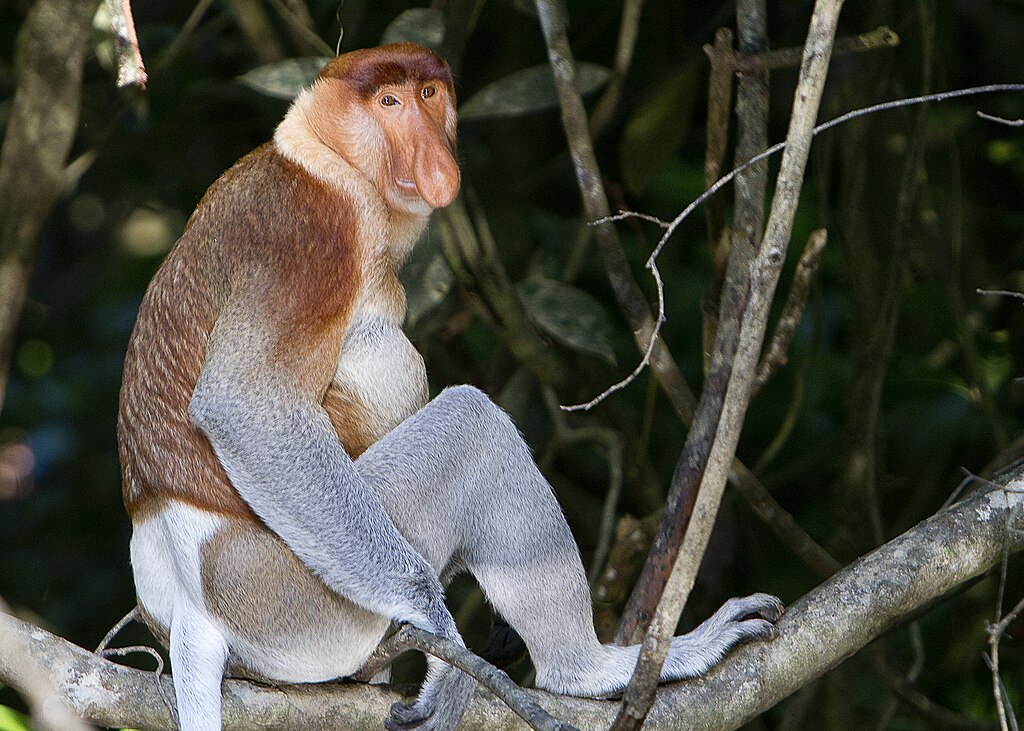
13. Irrawaddy Dolphin
- The Irrawaddy dolphin, a resident of Southeast Asian rivers, coastal waters, and even some lakes, is known for its short beak and bulging forehead.
- While they are not exclusively freshwater dolphins, they can thrive in both freshwater and brackish (mix of saltwater and freshwater) environments.
- Unlike most dolphins, they prefer shallow waters and are often seen swimming in small groups.
- Sadly, due to habitat loss, pollution, and entanglement in fishing gear, these charismatic creatures are classified as endangered.
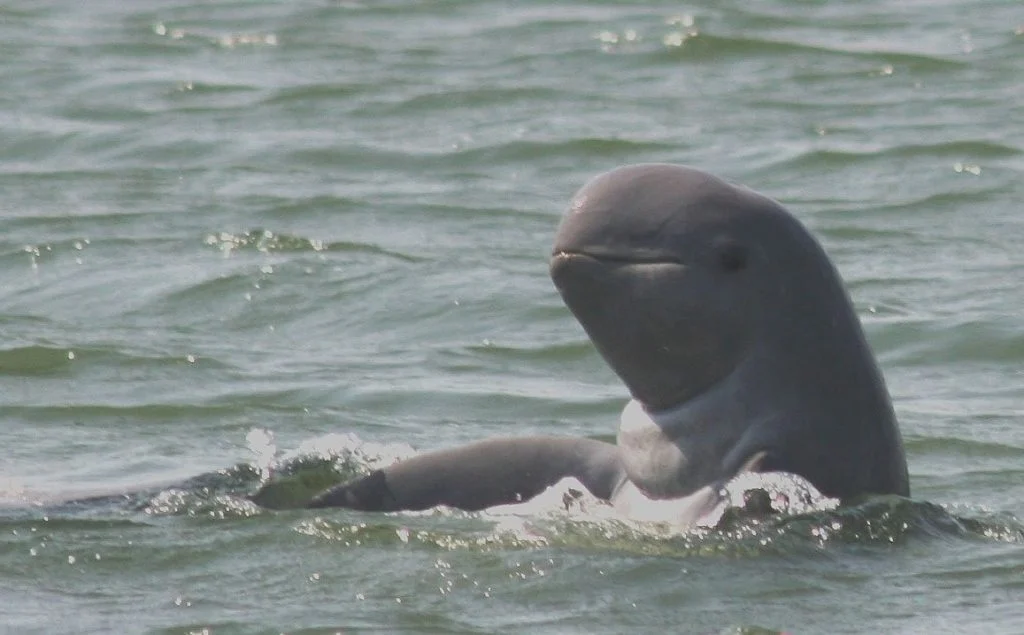
14. Maned Wolf
- The maned wolf, the tallest wild canid in South America, resembles a long-legged fox with a striking mane of fur around its neck and shoulders.
- Despite its appearance, it’s not closely related to wolves or foxes.
- These solitary hunters with long, black legs excel at navigating the tall grasslands of their habitat, using their height to spot prey over the waving grasses.
- Sadly, maned wolves are classified as endangered due to habitat loss and human-wildlife conflict.
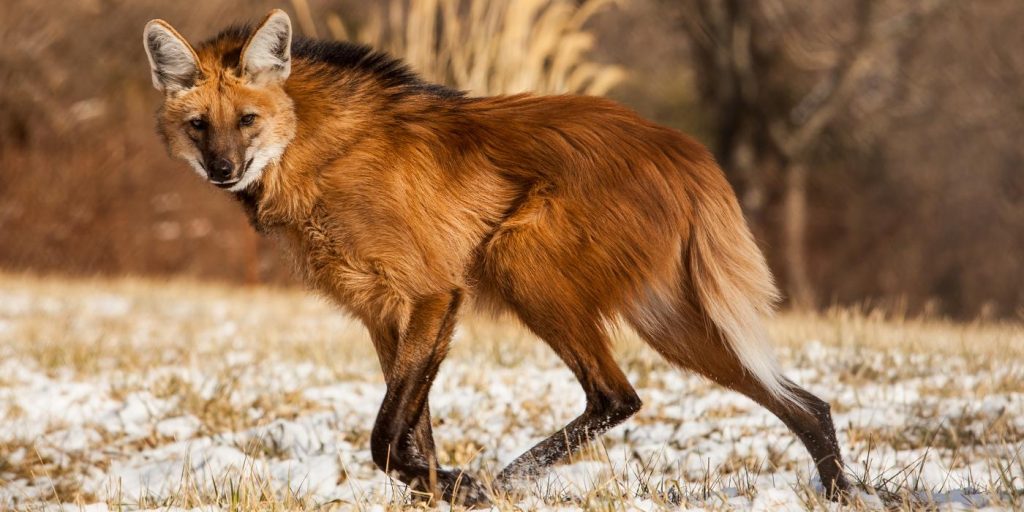
15. Fennec Fox
- The Fennec fox, a tiny desert dweller found in North Africa, boasts the largest ears relative to its body size of any canid.
- These enormous ears help radiate heat, a crucial adaptation for surviving scorching desert temperatures.
- Despite their diminutive stature – the smallest canids in the world – Fennec foxes are surprisingly skilled hunters, using their keen hearing to locate prey hidden beneath the sand.

16. Anglerfish
- This deep-sea fish has a bioluminescent lure that it uses to attract prey.
- The lure can be shaped like a worm, shrimp, or even another fish!

17. Tasmanian Devil
- The Tasmanian devil, the largest surviving carnivorous marsupial, reigns supreme in the island state of Tasmania.
- Despite their small stature, they boast the strongest bite force relative to their body size of any extant mammal, allowing them to crush bones and efficiently scavenge carcasses.
- Tragically, Tasmanian devils are currently endangered due to the spread of a contagious facial tumor disease.
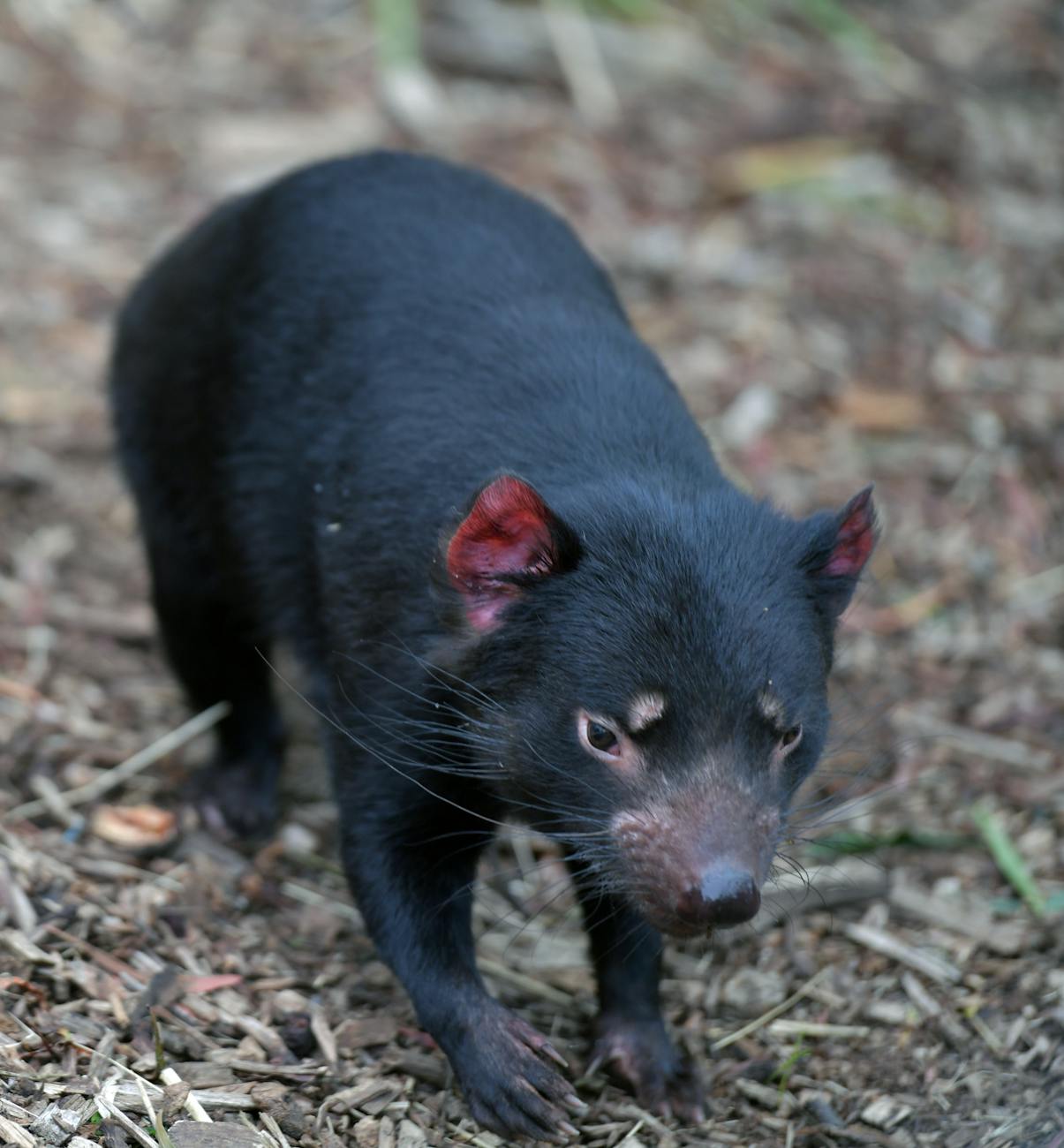
18. Narwhal
- Narwhals are medium-sized toothed whales found in the Arctic Ocean.
- Males are known for their long, spiral tusk, which is actually a modified tooth.
- The purpose of the tusk is not fully understood, but it may be used for display, fighting, or sensing changes in water pressure.
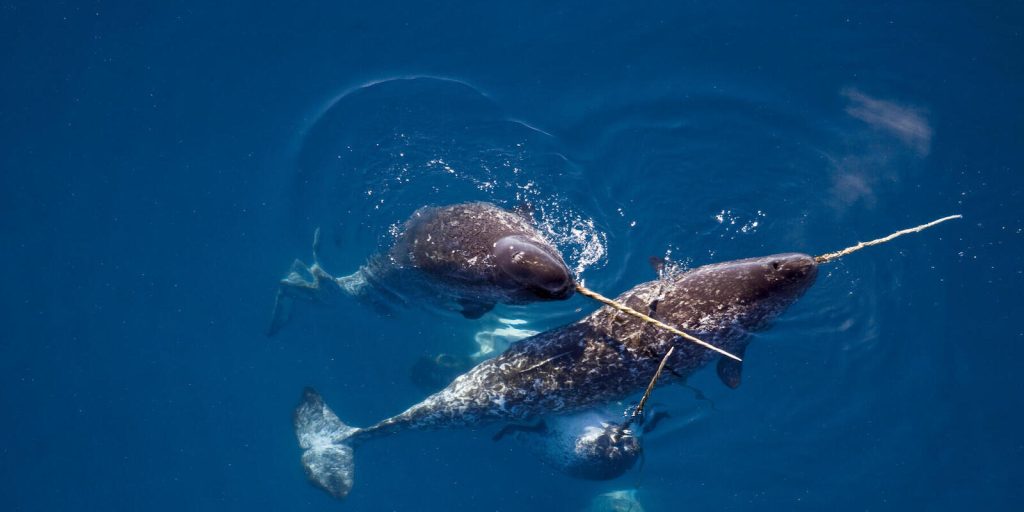
19. Okapi
- Also known as the forest giraffe, the okapi is a relative of the giraffe that lives in the rainforests of Central Africa.
- The okapi has a long neck, short legs, and sports a unique striped pattern on its rear and legs, resembling a zebra.
- Despite its long neck for reaching leaves, the okapi’s shorter legs and dense forest habitat make it a master of camouflage, blending in with the dappled sunlight.
- Sadly, these elusive herbivores are classified as endangered due to habitat loss in their native Central Africa.
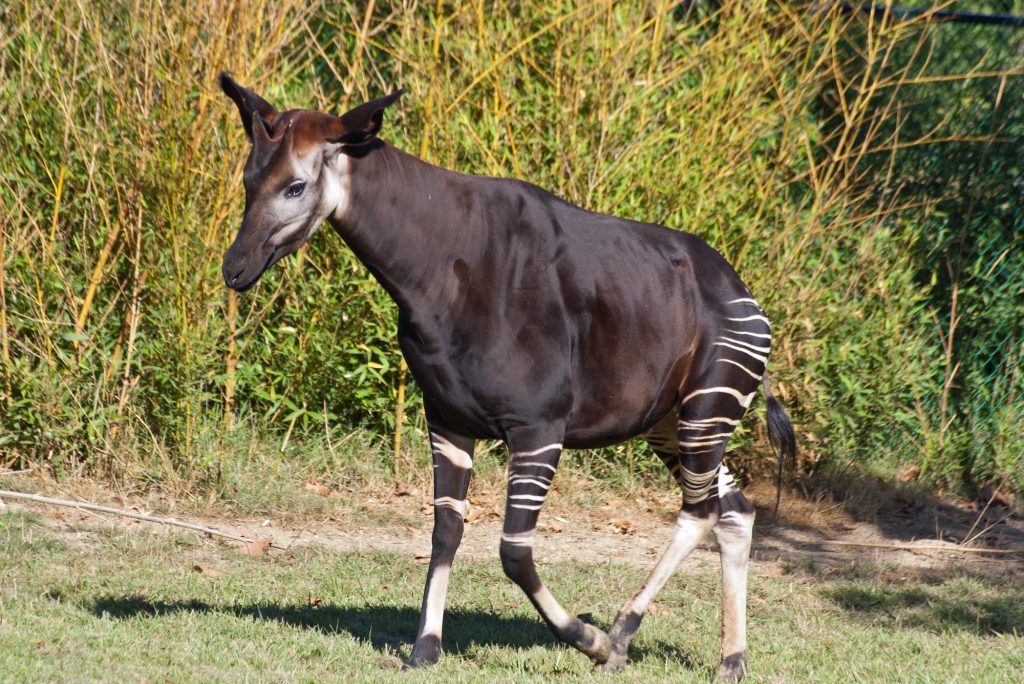
20. Aye-Aye
- The aye-aye, with its rodent-like teeth and enormous ears, is a bizarre lemur clinging to survival in Madagascar.
- This nocturnal primate uses its long, skeletal middle finger to tap on trees, listening for hidden insect larvae before scooping them out with the same finger, acting almost like a built-in woodpecker tool.
- It also has large eyes and ears that help it to see and hear in the dark.
- Sadly, due to habitat loss and superstition, the aye-aye is classified as endangered.
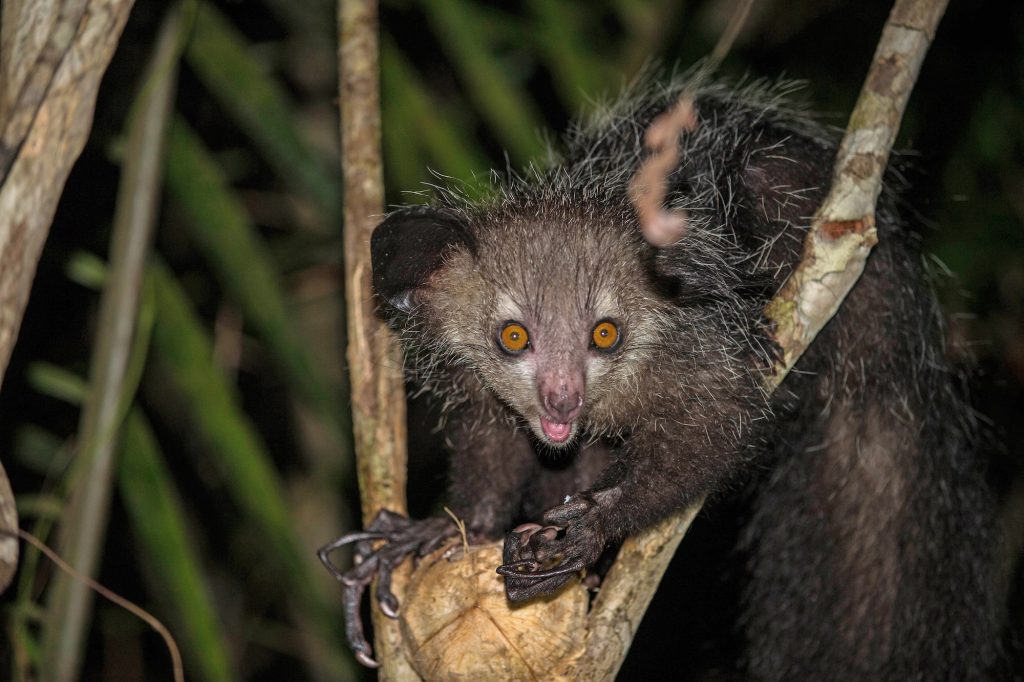
21. Platypus
- The platypus, a unique Australian mammal, defies categorization with its duck-like bill, webbed feet, and beaver-like tail.
- This bizarre creature electrolocates prey in the water using its bill and nurses its young with milk, even though it lays eggs!
- One more surprising fact: the male platypus is one of the few venomous mammals, spurring venom through claws on their hind legs.
- Sadly, habitat loss and pollution threaten the survival of this fascinating oddity.
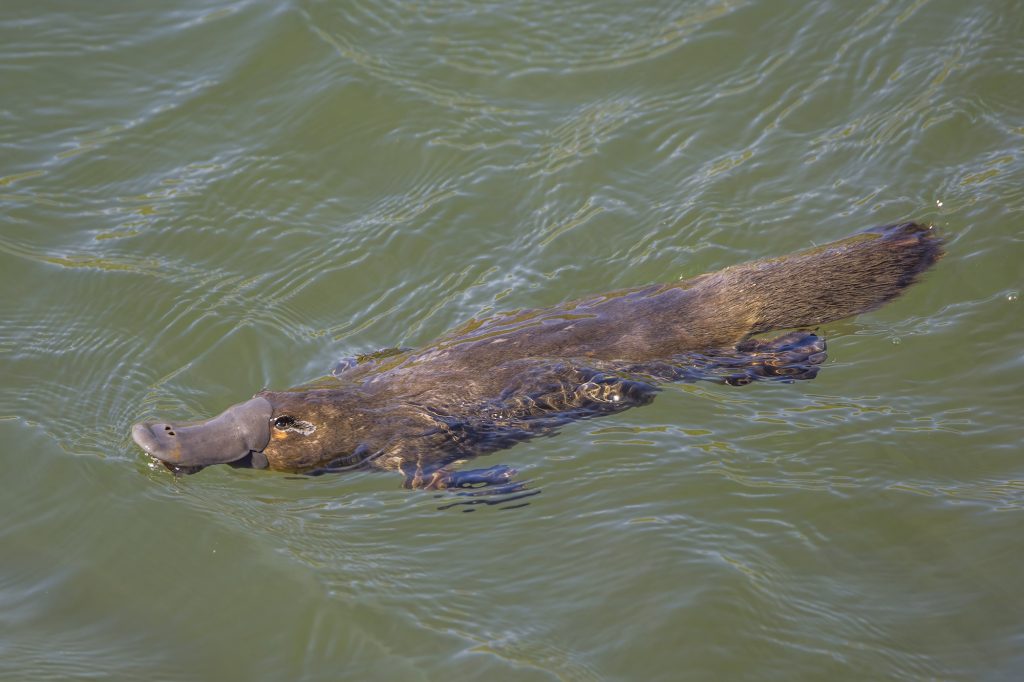
22. Capybara
- The capybara, South America’s largest rodent, is a chill giant.
- These social creatures resemble oversized guinea pigs and spend their days lounging in or near water, munching on aquatic plants.
- Despite their peaceful demeanor, capybaras are surprisingly agile swimmers and can even hold their breath underwater for several minutes.
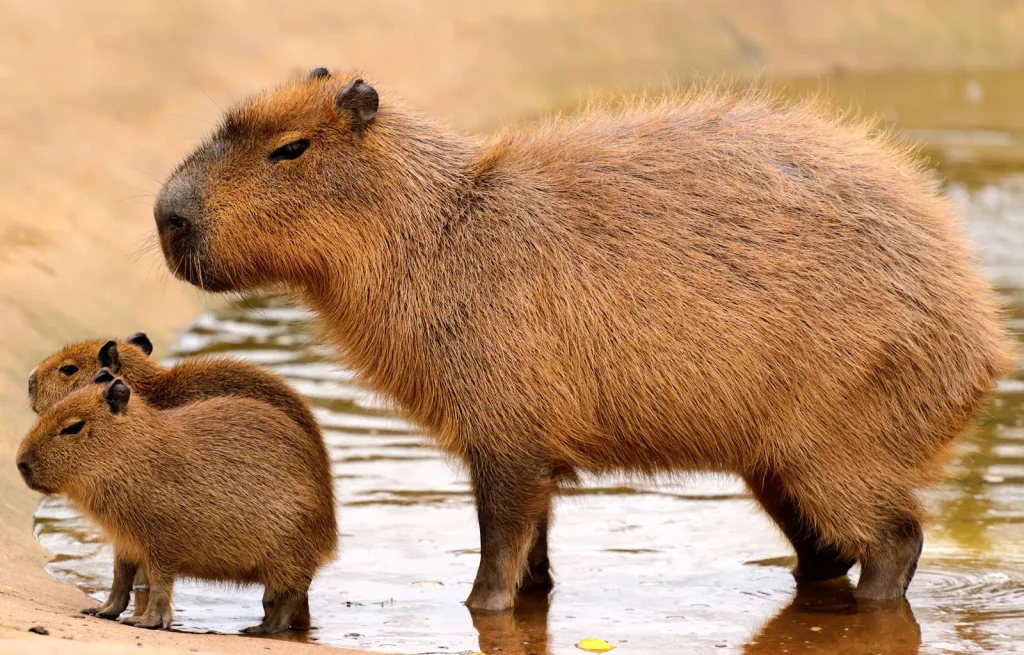
23. Echidna
- Echidnas, spiny mammals from Australia and New Guinea, share some traits with hedgehogs but are unrelated.
- Unlike most mammals, echidnas lay leathery eggs and carry their young in pouches after hatching.
- Unsurprisingly, they are related to the platypus (also egg-layers) and cousins to marsupials (with their pouches).
- Their long snouts and sticky tongues help them slurp up ants and termites – earning them the alternate name of spiny anteaters – while their sharp claws excel at digging.
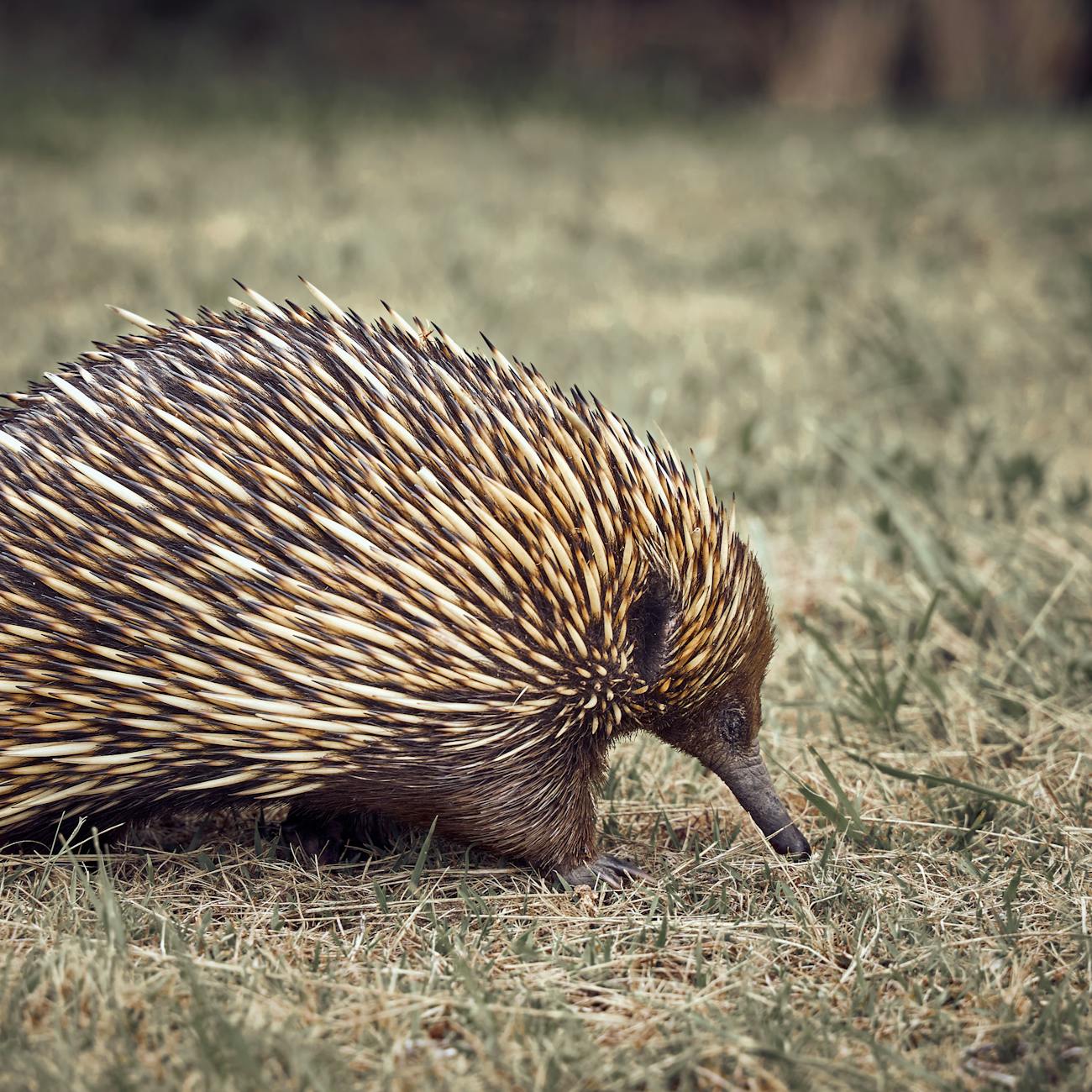
24. Marabou Stork
- Towering scavengers of Africa, Marabou Storks are known for their bald heads and long, throat sacs.
- Despite their ungainly appearance, they play a vital ecological role by cleaning up carcasses and preventing the spread of disease.
- Sadly, these fascinating birds are classified as critically endangered due to habitat loss.
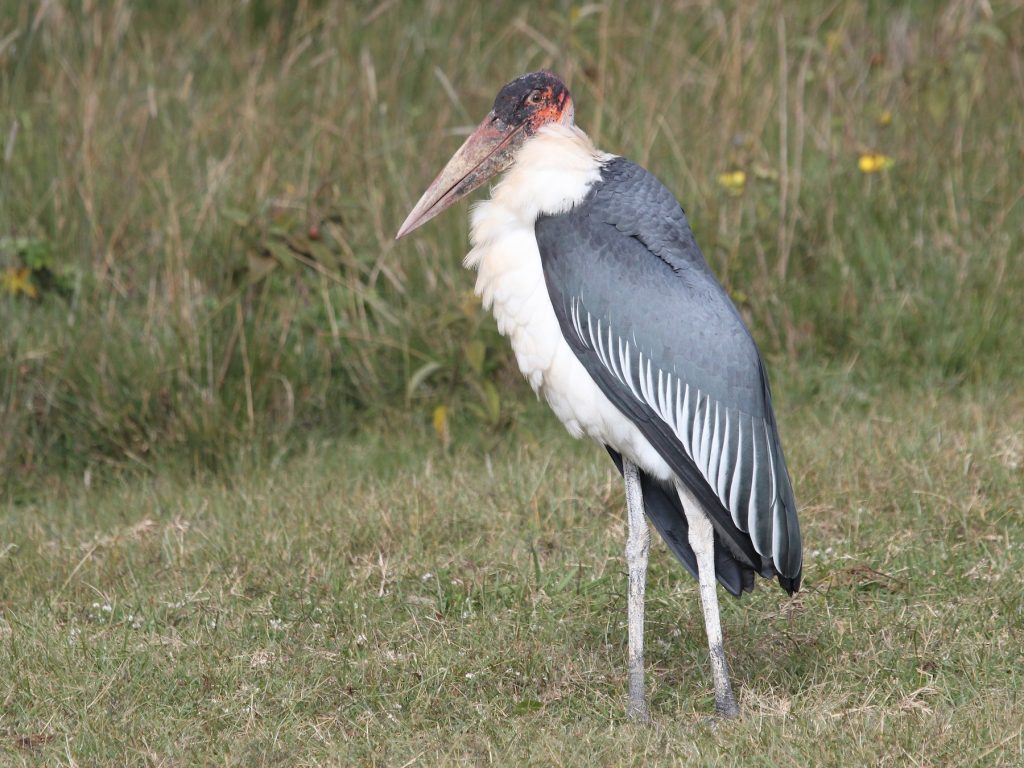
25. Thorny Devil
- This small lizard is found in the deserts of Australia.
- It is covered in sharp spines that help it to absorb water from the fog and dew.
- The thorny devil also has a false head that it can present to predators as a distraction.
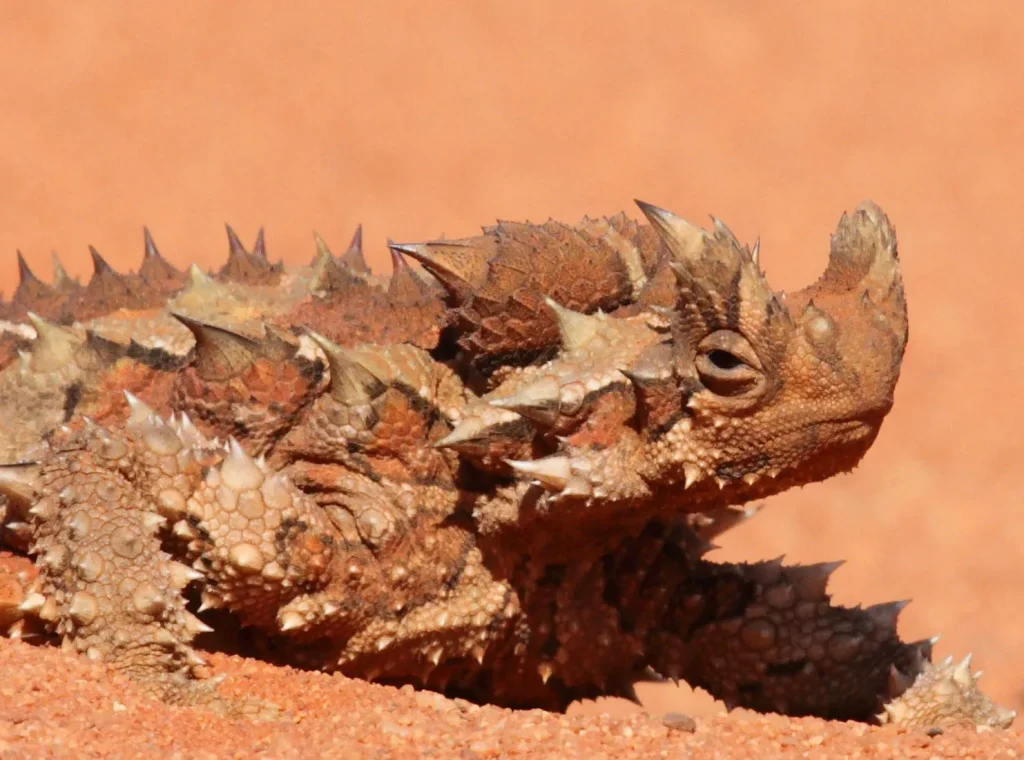
26. Chinese Water Deer
- Water deer, found in Korea and China, are small deer known for their lack of antlers and prominent canine teeth resembling tusks.
- These excellent swimmers can navigate rivers and islands in search of food and shelter.
- Despite their adeptness in water, they are sadly classified as Vulnerable due to habitat loss.
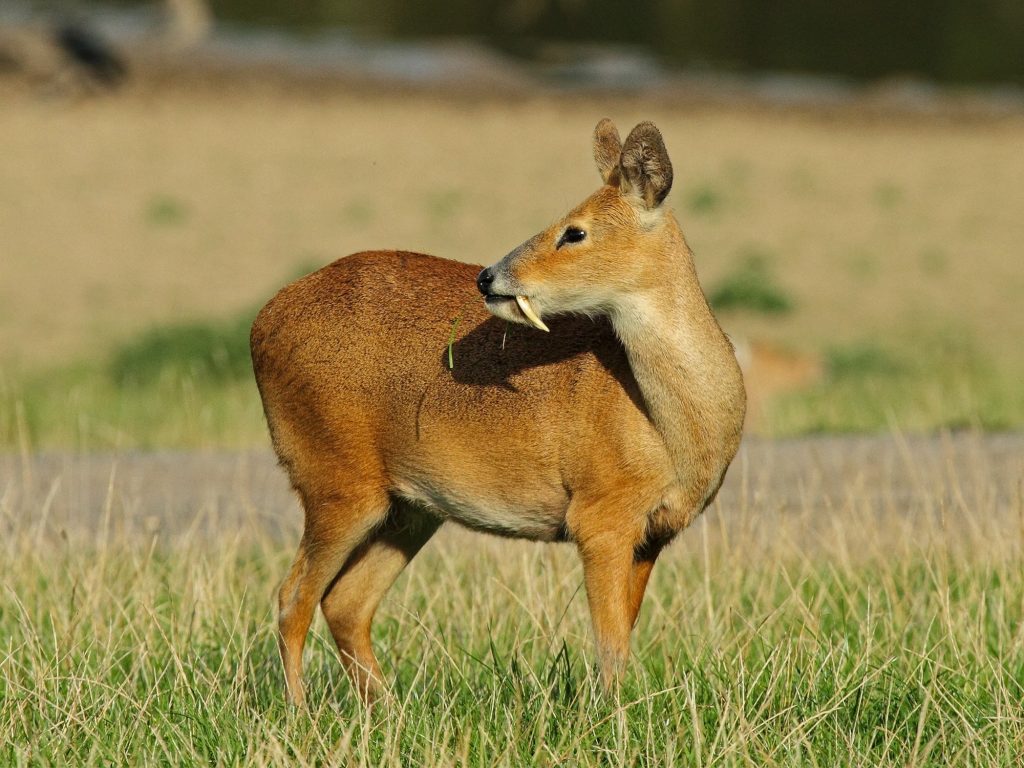
27. Manatee
- Manatees are large, gentle herbivores found in warm waters around the world.
- They are often called “sea cows” because of their grazing habits and rounded bodies.
- Many believe they are the source of mermaid legends due to their large size and rounded tails.
- Manatees are endangered due to habitat loss and boat collisions.
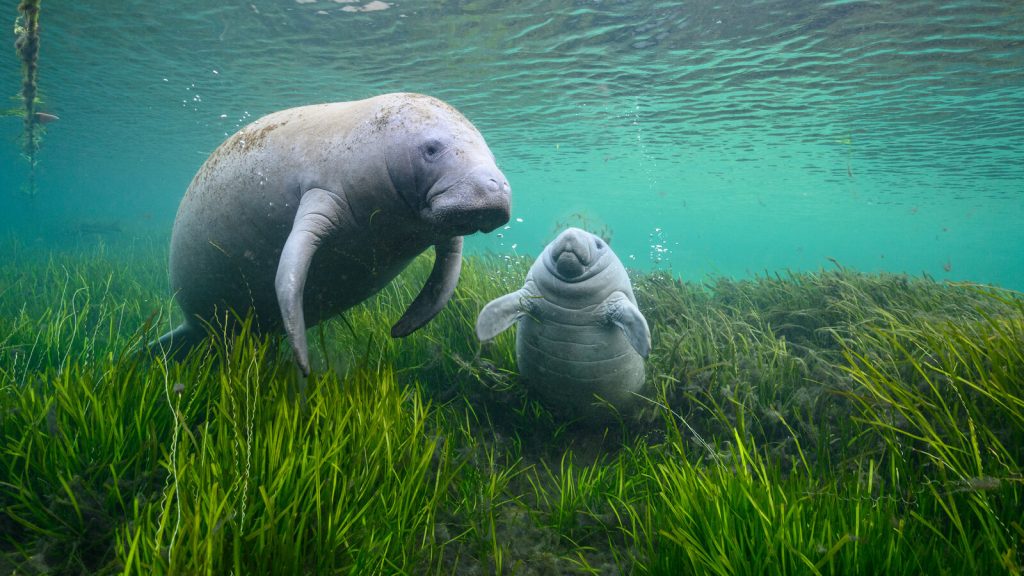
28. Handfish
- Nicknamed “living thumbs,” handfish are bizarre marine marvels found off the coast of southeastern Australia.
- Their pectoral fins resemble miniature hands, complete with webbed “fingers” they use to “walk” along the seafloor and manipulate objects.
- Sadly, these fascinating fish are critically endangered due to habitat destruction and accidental capture in fishing gear.
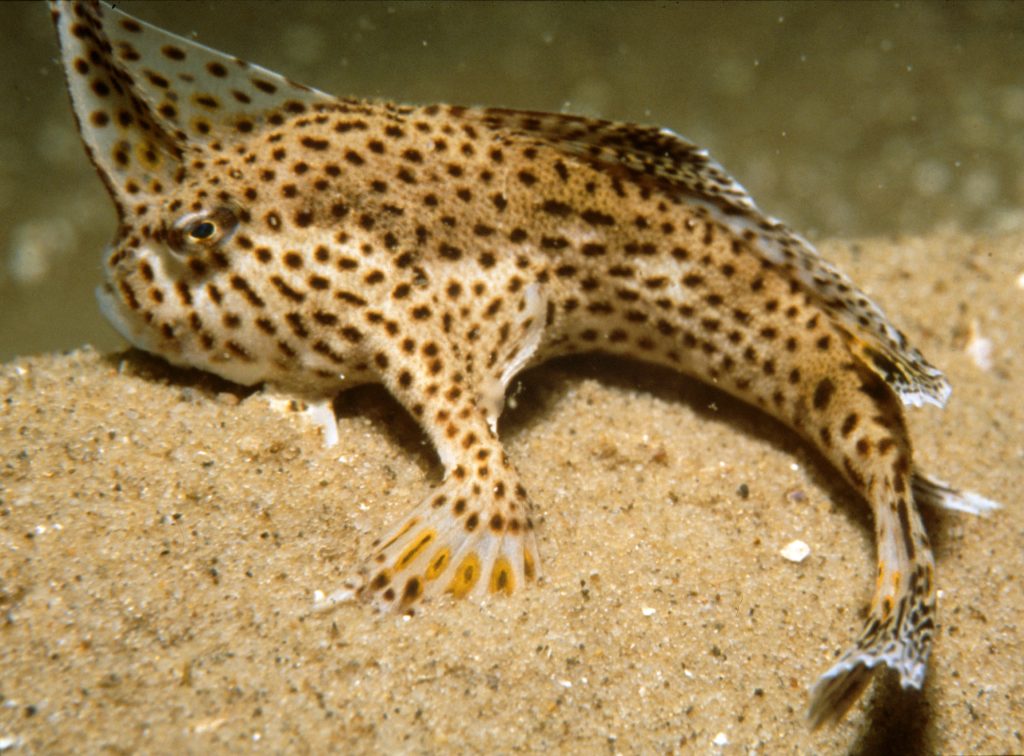
29. Amazon River Dolphin
- The Amazon river dolphin – also known as the boto, bufeo, or pink river dolphin – defies expectations with its breathtaking rosy hue.
- These playful creatures, the largest river dolphins in the world, navigate the murky Amazon waters with the help of exceptional echolocation.
- Sadly, their playful nature and habitat within human-impacted areas make them vulnerable, with populations classified as vulnerable or endangered in certain regions.
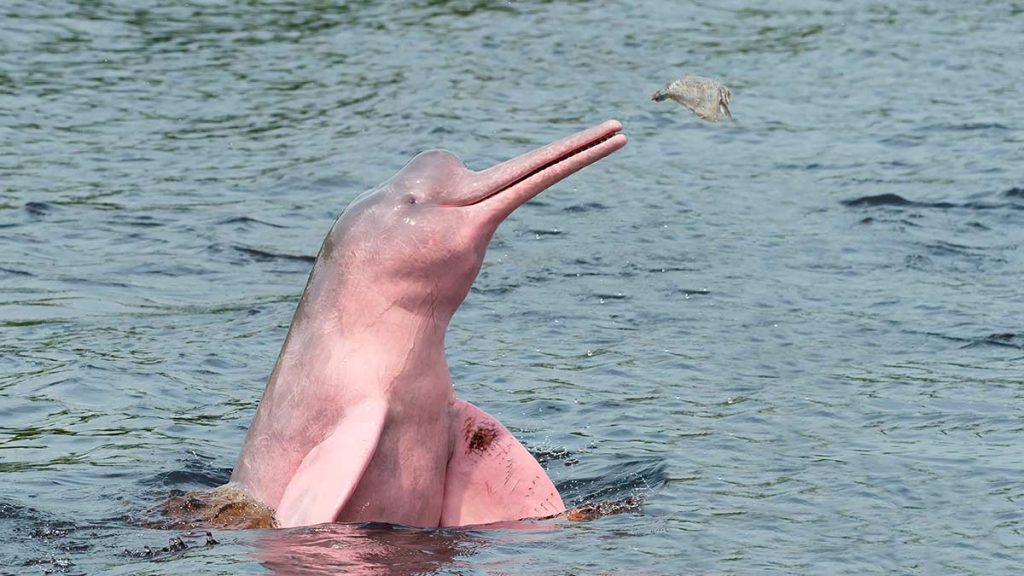
30. Vampire Bat
- Despite its fearsome name, the vampire bat isn’t bloodthirsty like Dracula.
- These tiny nocturnal mammals feed exclusively on the blood of other animals, using razor-sharp teeth to make a small incision and then lapping up the freely flowing blood with their grooved tongues.
- An anticoagulant in their saliva keeps the blood from clotting, ensuring a smooth meal.
- The anti-clotting properties of vampire bat saliva have been studied and used to develop treatments for patients that suffer from strokes (no joke – it’s called Draculin).


